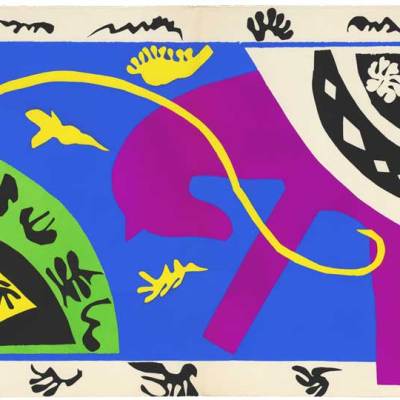Last week the Saatchi Gallery and Google+ announced the winner of the inaugural Motion Photography Prize, chosen by judges including film director Baz Luhrmann, plus artists Tracey Emin and Cindy Sherman. New York artist Christina Rinaldi, urban category finalist, won the competition with a black and white capture of a window cleaner, which Sherman described as ‘almost [transcending] the GIF medium by turning the soapy water into brushstrokes, so it seems more like creating a painting.’
Christina Rinaldi (Urban)The Motion Photography Prize is open to the public from 17 April – 24 May. Entry to all exhibitions at the Saatchi Gallery in London is free

GIFs (most commonly associated with pop cultural phenomena, celebrities taking tumbles on loop and Buzzfeed lists) merge the practices of still photography and film. The creator can control variables such as the number of frames and speed, whether it is a seamless cycle of motion or has a beginning and end, and inject pauses.
The ubiquity and ease of motion photography has been accelerated and popularised by social apps such as Vine – six seconds of continuous video footage that play on loop – and Instagram, which has a video function for up to 15 seconds of video with pauses and filters. Rinaldi favours Instagram, comparing the spontaneous snapshots to sketches that might later turn into a larger piece.
The Prize is a vote of confidence in the medium – among the first handful of declarations of motion photography as an art form. The competition received 4,000 entries from 52 countries across the six categories – landscape, lifestyle, action, night, people and urban.
Boxer Emma Critchley (people) The Motion Photography Prize is open to the public from 17 April – 24 May. Entry to all exhibitions at the Saatchi Gallery in London is free

‘I think anything digital has to work a little bit harder to be considered art…it’s not something that you’re actually creating necessarily by hand, and there are always questions [such as] is the camera or computer just a tool,’ says Rinaldi. Its accessibility and rapidity are what makes the mediums future particularly exciting. ‘Once we learn what the rules and standards are, then people can learn how to break the rules and do something completely different.’
Other finalists included a hyper-real entry from Micaël Reynaud of a pigeon spreading its wings (action), a grainy vision by Stefanie Schneider that is quite the opposite of the crisp, clean landscapes one might expect in such a category, and an intensely-composed snapshot by Matthew Clarke (night).
Rinaldi is employed in digital media, adding web and graphic design skills to her work as an artist, and is now exploring motion photography, short videos and adding audio. She makes and shares many videos and animated GIFS throughout her day. Most of Rinaldi’s motion photography work is created in two ways: either by video that is later altered or manipulated in post-production on a mobile phone or computer, or – like her winning piece – a series of still photographs. ‘People say a photo can be a moment in time, and motion photography for me is just extending that – it’s not just one moment in time, it’s a series of moments,’ she describes.
Kostas Agiannitis (lifestyle) The Motion Photography Prize is open to the public from 17 April – 24 May. Entry to all exhibitions at the Saatchi Gallery in London is free

‘It was important for me that this particular piece was still images, because the speed in which [the window cleaner] was working was really important for me to achieve. I didn’t want it to be perfectly smooth. I only showed very particular frames because his rhythm was so incredible – I wanted to emphasise his movement, how drastic the angles were that he was making.’
Rinaldi believes the animated GIF made a resurgence with the popularity of the cinemagraph, which is echoed in the works of finalists Emma Critchley (people) and Kostas Agiannitis (lifestyle). But is this just a phase that the Saatchi Gallery has timely pounced upon?
‘I think it’s all an evolution – I do think that it can eventually become mainstream,’ says Rinaldi. ‘I think [digital media] has a lot of potential to merge with performance art, as well. There’s a lot happening with projected video and with human interactive video, where the human controls what’s happening on the projection by the movements of their body.’
The six finalists’ work can be found online, and will be exhibited alongside the other 54 shortlisted entrants until 24 May at the Saatchi Gallery in London.
Related Articles
Warhol’s Amiga Computer Artworks Uncovered After 30 Years (Estella Shardlow)
Moving On: Digital Portraiture (Camilla Apcar)
AGNES Goes Live at the Serpentine (Tom Overton)
Augmented Reality Meets the Art World (Estella Shardlow)



